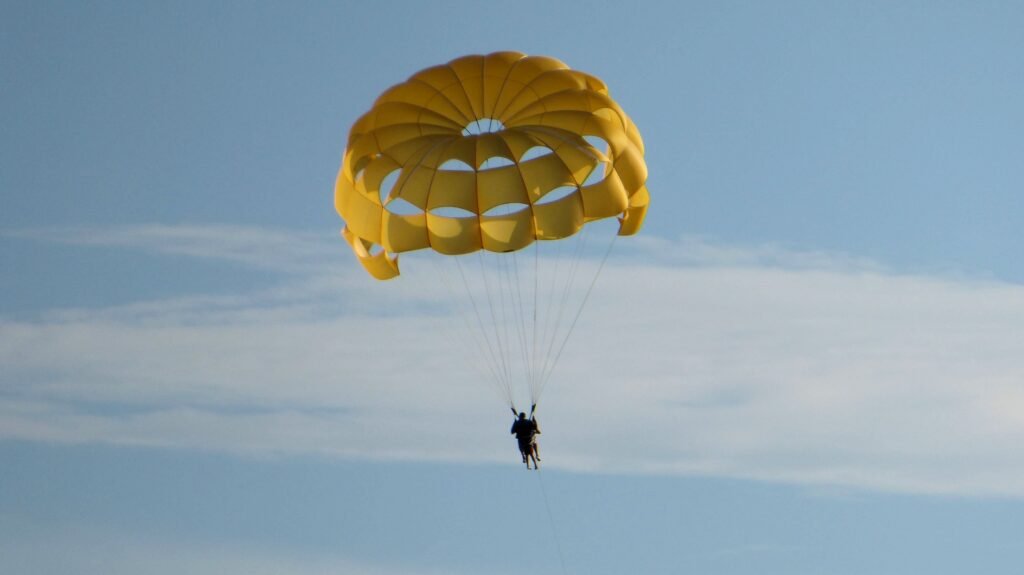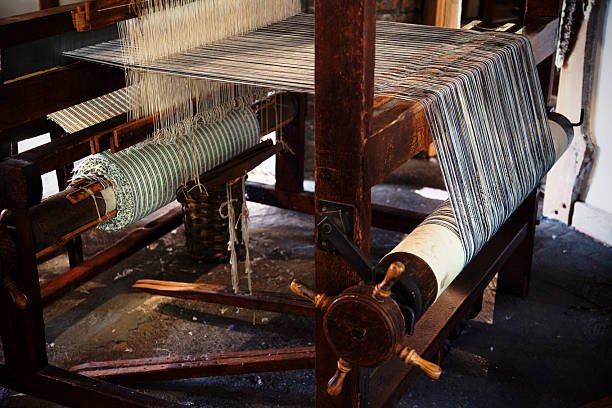Before answeringto the question “How does air resistance affect the acceleration of a falling parachute?” let us first discuss what parachute is? A parachute is a device used to slow down the descent of an object through the air. It is typically made of parachute fabric, which is a specialized form of technical textiles. Technical textiles refer to materials that are engineered for specific functions and applications, and they play a crucial role in various industries, including aerospace, automotive, and medical.
Parachuete fabrics can be made of using variuos textile fibers or filaments. Most commonly, they are made of nylone fibers. Polyester fibers are also used for making

Parachute Fabric and Its Properties:
Parachute fabric is specifically designed to have properties that make it suitable for its intended use. Some of the key properties of parachute fabric include:
Light Weight: Parachute fabric is lightweight to minimize the overall weight of the parachute and the object it is intended to slow down during descent.
High Strength: It is crucial for parachute fabric to be strong enough to withstand the stresses and forces experienced during deployment and descent.
Low Porosity: The fabric is designed to have low porosity, which means it allows minimal airflow through its surface. This property is vital for controlling air resistance during the parachute’s descent.
Controlled Stretch: Parachute fabric should have controlled stretch to ensure stability and precise control during the descent process.
Durability: The fabric must be durable to withstand multiple deployments and ensure longevity.
how does air resistance affect the acceleration of a falling parachute
Air resistance, also known as drag, is the force that opposes the motion of an object as it moves through the air. When a parachute is deployed and an object starts to fall, the parachute fabric interacts with the surrounding air, causing air resistance to come into play.
As the parachute descends, it experiences two primary forces: gravity pulling the object downwards and air resistance pushing upwards against the object’s motion. Initially, as the parachute opens, there is a net force acting downwards, resulting in an acceleration of the parachute and the object attached to it.
However, as the parachute gains speed and descends further, the air resistance force increases significantly. This increase in air resistance gradually balances out the force of gravity acting on the parachute. Eventually, the air resistance force becomes equal in magnitude but opposite in direction to the force of gravity, resulting in a state of dynamic equilibrium called terminal velocity.
Terminal velocity is the constant speed achieved by an object falling through the air when the drag force equals the gravitational force. At this point, the net acceleration of the falling parachute becomes zero, and it descends at a constant velocity without accelerating further.
In conclusion, air resistance plays a critical role in affecting the acceleration of a falling parachute. Initially, air resistance is relatively low, and the parachute experiences significant acceleration due to the force of gravity. However, as the parachute gains speed, air resistance increases, eventually leading to a state of terminal velocity where the net acceleration becomes zero, and the parachute descends at a constant speed. The properties of parachute fabric, such as low porosity and controlled stretch, help in managing and optimizing air resistance during the parachute’s descent, ensuring a safe and controlled landing.


